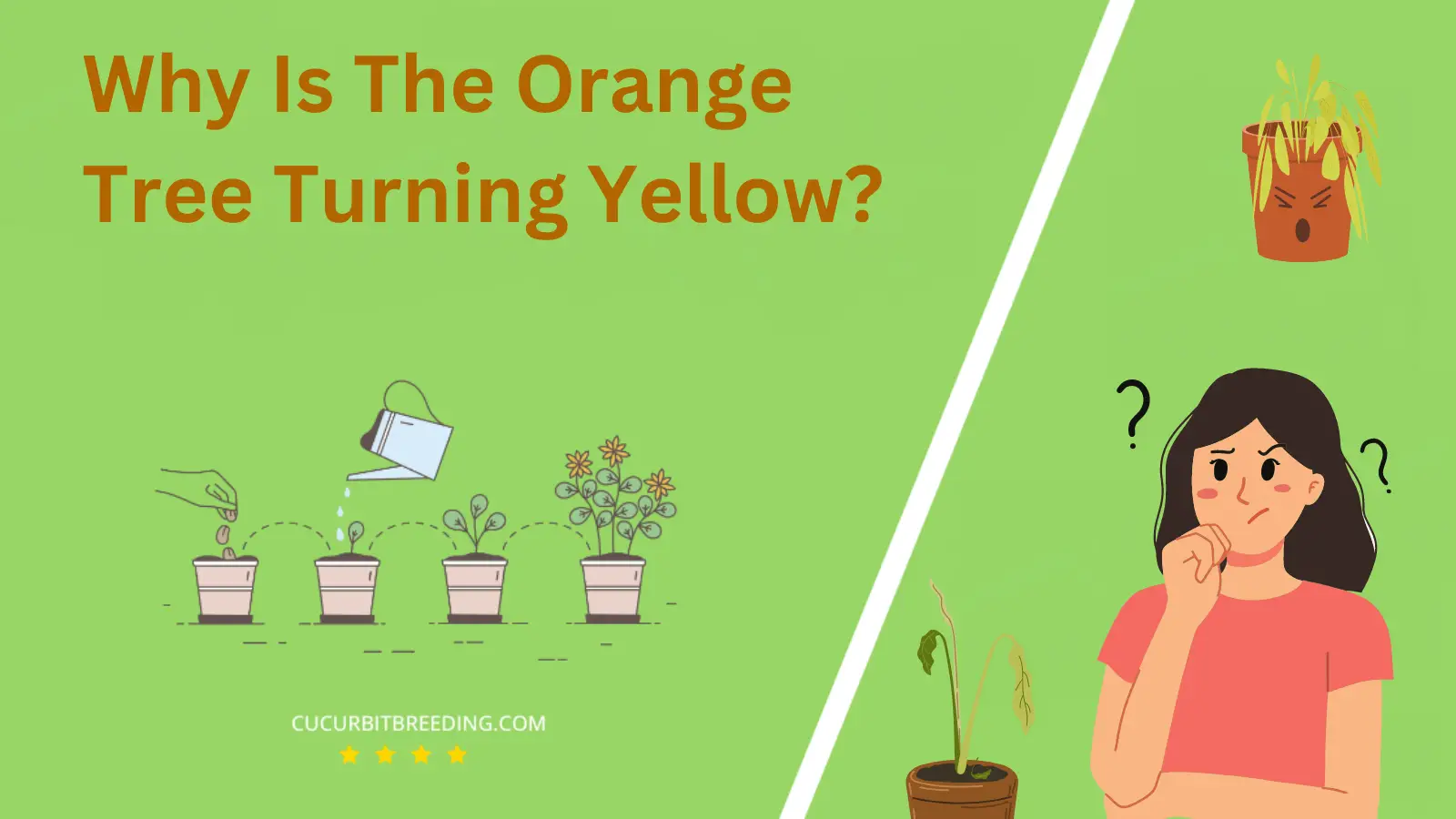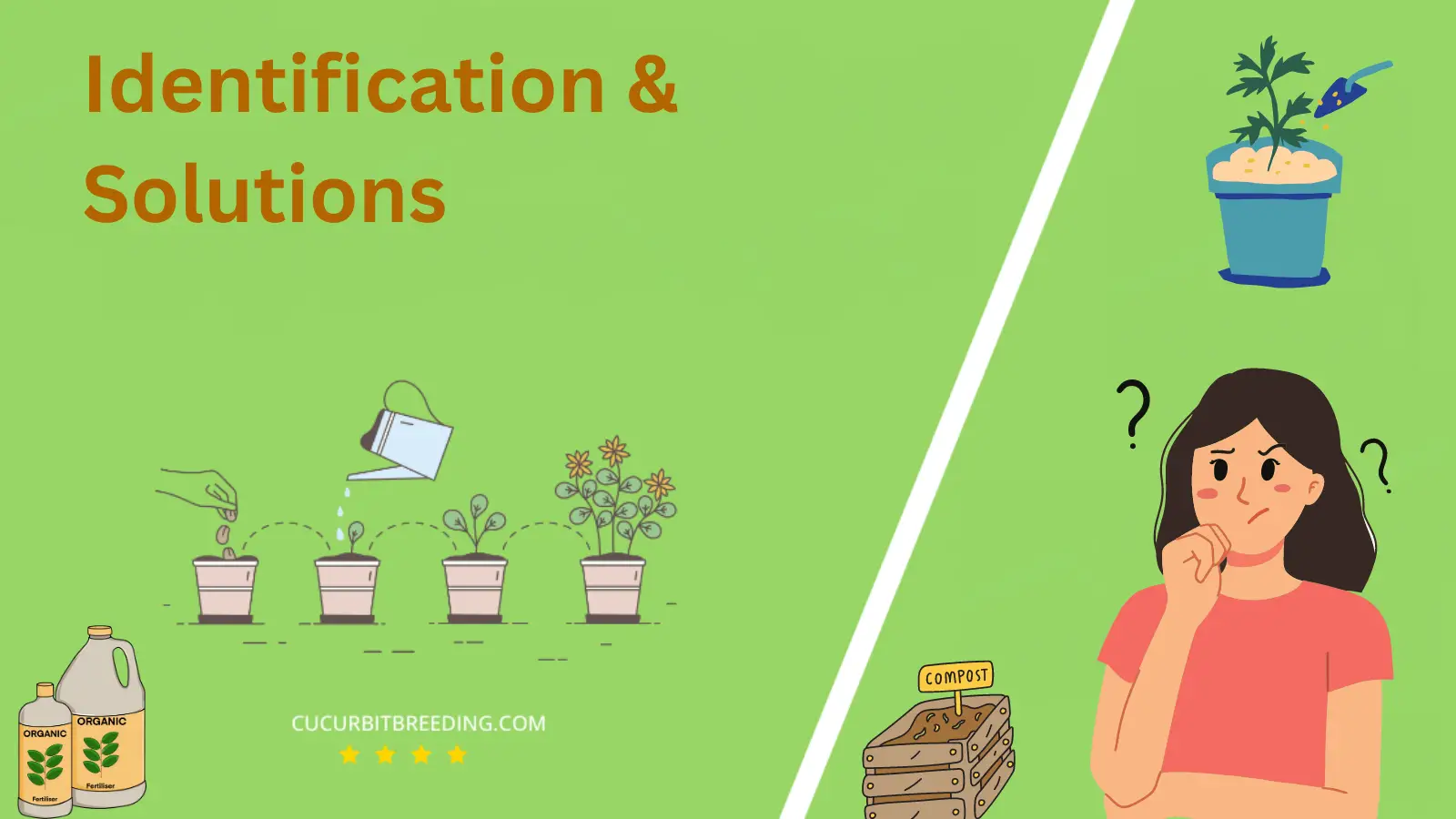
When the lush green foliage of your beloved orange tree starts turning yellow, it may justly ring alarm bells. Is it simply a seasonal shift or an ominous sign of ailing health? The change in color, often sudden and unexpected, can be disheartening for passionate gardeners.
Digging into the underlying causes is crucial for determining the appropriate care. Strap in as we embark together on this exploratory journey, pulling back the layers to unravel the mystery of these yellowing orange tree leaves.
Why Is The Orange Tree Turning Yellow?
1. Nutrient deficiency
| Description | in the leaves causes chlorophyll breakdown, resulting in a yellow color. |
|---|---|
| Solution | Apply a balanced fertilizer to address nutrient deficiency and restore the green color in leaves. |
An orange tree turning yellow is commonly an indication of a nutrient deficiency. More specifically, this discoloration can be attributed to a lack of essential nutrients, such as nitrogen, iron, and zinc. These nutrients are crucial for chlorophyll production, which provides the green color of the leaves and allows the tree to absorb sunlight for photosynthesis. When these nutrients are not adequately available, it reduces chlorophyll production and causes leaves to turn yellow.
To address this issue, it’s important to correct the nutrient deficiency. This can be done by testing the soil around the tree to determine which nutrients are lacking. After you’ve identified the specific deficiencies, you can use a targeted fertilizer to replenish them. For example, a nitrogen-rich fertilizer can combat a nitrogen deficiency. Additionally, maintaining the overall health of the tree including proper watering and pest control can also help to prevent yellowing. It’s crucial to follow the dosage instructions on the fertilizer, as too much can also harm the tree.
Lastly, you might want to consider mulching around the tree. Mulch helps conserve soil moisture and provides a slow-release of nutrients as it decomposes. Choosing organic mulch, such as compost, can help increase nutrient availability in the soil over time. It’s also a good idea to continually monitor the tree’s health and seek professional advice if conditions don’t improve or worsen.
2. Watering issues (overwatering or underwatering)
| Description | can cause nutrient deficiency, leading to chlorophyll breakdown and yellowing of the leaves. |
|---|---|
| Solution | Properly adjust watering to avoid overwatering or underwatering for the yellowing orange tree. |
Watering issues can cause a orange tree to turn yellow due to a disruption in nutrient absorption. When an orange tree is overwatered, the roots become waterlogged and oxygen-starved. On the other hand, if an orange tree is underwatered, it becomes dehydrated, leading to stress.
Effects of Overwatering and Underwatering:
In both cases, the imbalance affects the tree’s ability to absorb necessary nutrients from the soil, causing the leaves to turn yellow as a signal of distress. Over time, this can lead to more severe health issues for the tree, including root rot in overwatered trees or eventual death in severely underwatered ones.
Solutions:
To rectify this issue, adjust your watering routine. If you’re overwatering, wait until the top 2 inches of the soil dry out before watering again. For underwatering, ensure the orange tree receives thorough, deep watering, so the water reaches deep into the root system. Additionally, consider improving the soil’s drainage by incorporating some well-rotted compost or other organic matter to help manage water more efficiently.
3. Pest or disease infestation
| Description | The orange tree turns yellow due to pest or disease infestation affecting its physiological processes. |
|---|---|
| Solution | Apply appropriate pest control measures or disease treatment to restore health and color to tree. |
The yellowing of an orange tree’s leaves can often be attributed to **pest or disease infestation**. Various insects can infest an orange tree, sucking on the sap in the leaves and draining the tree of its vital nutrients. This nutrient deficiency can then cause the tree leaves to turn yellow. Common pests that infest orange trees include aphids, mites, and scale insects.
To address this crucial problem, it’s necessary to identify the pest or disease causing the issue. Once identified, apply the appropriate pesticide or insecticide. Be sure to follow the instructions on the product label to avoid damaging the plant further. If the infestation is minimal, natural remedies like a strong jet of water or insecticidal soap might be sufficient. But for severe cases, stronger chemical solutions may be required.
Also, regular **maintenance and monitoring** of the tree can aid in preventing the recurrence of the infestation. In addition to that, maintaining proper watering and fertilization schedules will strengthen your tree against future pest attacks. A healthy tree is always less prone to pest and disease infestations.
Ensuring your orange tree receives the appropriate level of sunlight, water, and fertilizers will aid in maintaining its overall health and vitality. A healthy tree is naturally more robust in resisting pests and diseases, negating the need for heavy chemical countermeasures.
4. Soil pH imbalance
| Description | The orange tree turns yellow due to pest or disease infestation affecting its physiological processes. |
|---|---|
| Solution | Apply appropriate pest control measures or disease treatment to restore health and color to tree. |
Soil pH imbalance can greatly affect an orange tree’s health, often leading to the yellowing of leaves. This problem occurs because orange trees require slightly acidic soil (pH 6 to 7.5). When the soil pH exceeds this range, it can prevent the tree from effectively absorbing essential nutrients, leading to a condition known as chlorosis which is evident through yellowing leaves.
Correcting soil pH imbalance involves several steps. If the soil is too acidic, lime can be added to increase the pH. Conversely, if the soil is too alkaline, sulfur can be added to decrease the pH. However, changes must be made gradually, monitoring the pH level constantly, as drastic changes could harm the tree further. Complementarily, a balanced citrus-specific fertilizer can assist in providing the necessary nutrients that the tree could be missing due to the pH imbalance. Lastly, remember that consistency in care is key to maintaining a healthy orange tree.

5. Environmental stress (extreme temperatures, excessive sunlight)
| Description | Apply appropriate pest control measures or disease treatment to restore health and color to tree. |
|---|---|
| Solution | Provide shade and regulate temperature to reduce stress on the orange tree, preventing yellowing. |
When an orange tree is subjected to environmental stress, especially extreme temperatures and excessive sunlight, it can lead to a condition called leaf chlorosis where leaves start turning yellow. High temperatures can lead to rapid water loss from the plant, causing dehydration and yellowing. Excessive sunlight can cause photobleaching, damaging the chlorophyll which is responsible for the green color of leaves, hence turning them yellow.
One of the solutions to protect your orange tree from extreme temperatures is to provide adequate watering. Remember, during hot weather, the tree’s water demands will be higher, so you would need to increase the frequency and amount of watering. It’s also important to mulch around the base of the tree to help conserve water.
To shield the orange tree from excessive sunlight, consider installing a shade cloth over the tree during the hottest part of the day. Note that this is specially recommended for young trees that are more vulnerable to scorching. Be sure not to cover the tree completely; it still has to receive an adequate amount of sunlight to carry out photosynthesis.
6. Lack of sunlight
| Description | The orange tree is turning yellow due to a lack of sunlight affecting its physiology. |
|---|---|
| Solution | Increase exposure to sunlight to prevent yellowing of orange tree leaves. |
An orange tree requires an adequate amount of sunlight for photosynthesis, the process by which green plants make food. Lack of sunlight can interrupt this process, leading to diminished chlorophyll production, which is responsible for the healthy green color of leaves. With insufficient chlorophyll, the leaves of the orange tree may turn yellow.
To rectify this issue, consider moving the orange tree to a location where it can get a minimum of 6 hours of direct sunlight each day. If the tree is situated indoors or if it’s winter season, fluorescent grow lights can be a viable alternative. Regular pruning also helps by ensuring that all parts of the tree receive sufficient light. Remember, however, not to water the tree excessively as this may cause root problems that can also lead to yellowing leaves.
7. Ageing or natural leaf shedding
| Description | The gradual breakdown of chlorophyll in the leaf causes it to turn yellow. |
|---|---|
| Solution | Increase nutrient intake and provide adequate sunlight and water to promote healthy leaf growth. |
One of the most common reasons for an orange tree to turn yellow is due to nutrient deficiencies, particularly nitrogen. Nitrogen is crucial for the tree’s growth and general health. It plays a significant role in photosynthesis, the process through which the plant converts light energy into chemical energy. Without sufficient nitrogen, orange trees can’t produce enough chlorophyll, which leads to yellowing of the leaves.
To address this deficiency, you can supplement your orange tree’s diet with a high-quality nitrogen-rich fertilizer. Additionally, ensuring the pH of the soil is appropriate- between 6 and 7.5, helps the tree absorb nitrogen more effectively. Regularly adding compost to the soil can also improve its nutritional makeup and structure, aiding in nutrient absorption.
Remember to water your orange tree correctly as overwatering can prevent roots from accessing nutrients they require. Water deeply but infrequently, making sure the soil is slightly dry before the next watering. Following these steps can help your orange tree regain its vibrant green color and vigour. A balance of proper watering, soil pH, and fertilization is key to resolving the yellowing issue.